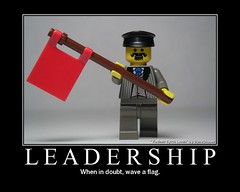
Crowdsourcing without a purpose is like unleashing a horde of zombies.
There are three things you need to do to engage staff with crowdsourcing: give them a goal, let them choose their own weapons (technology and methods used to accomplish the goal; group organizational structure), and celebrate both their successes and failures.
The easiest way to get staff engaged is to involve them in the process, and listen/respond to the input they provide.
Keep in mind that this only works if your organization is not so wedded to hierarchy that they can’t set that aside to get the work done. A way to handle that kind of work environment is to have a moderator to keep those staff involved, or remove from the group the managers that cause the problem.
Speaker: Lisa Hardy
About four years ago, they put together a team of eight to plan for leadership development, board engagement & strategic planning, and staff engagement. One of the keys to the group’s success was that it had closure — it was not an ongoing committee, but rather a task force with a specific goal and timeframe.
One of the outcomes was a “Future Action Think Tank,” which was not mandatory for all staff, unlike other events of that nature. The staff had to submit an application/essay explaining why they wanted to attend, and almost all attended. If they didn’t submit an expression of interest, they were turned away.
They started the day with a futurist faire, where staff talked about the things they were doing in a poster session style setting. The biggest part of the day was the field trip. They had several different location options around the city, and each of the places visited talked about their particular challenges and what they were doing to meet them (university digital library, zoo, science center, immigrant serving agencies, youth serving agencies, volunteer agencies, etc.).
There were other events that happened after it, and the second one actually came directly from administration. They had staff come and pitch their ideas to the administrators, and one was given funding to go ahead. Kind of like an entrepreneur TV show in Canada.
20% of staff are always open to change, and are willing to follow/lead anywhere; 20% of staff will stand in the way of change; and 60% will go either way. Where will you focus your energies?
Q&A:
Audience member suggested using Belbin for assessing potential roles when forming a group, and this may help avoid some of the issues of organizational hierarchy impeding staff involvement.
